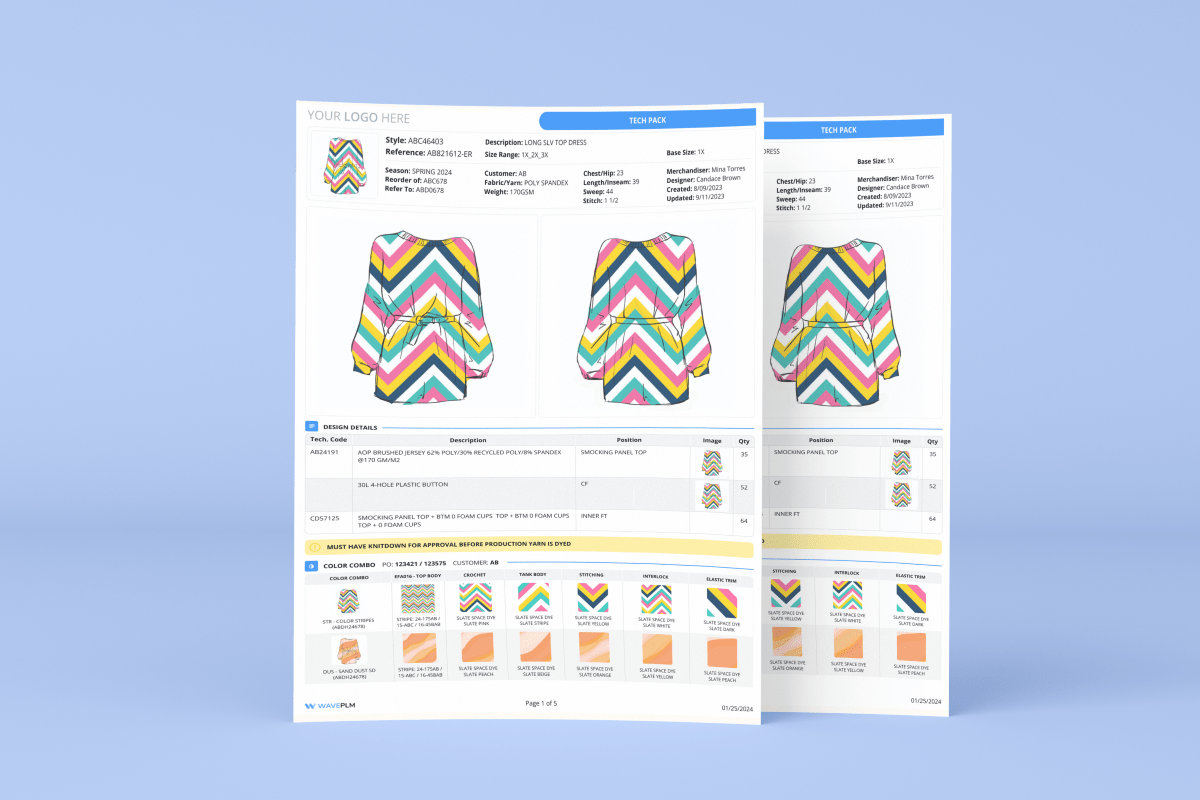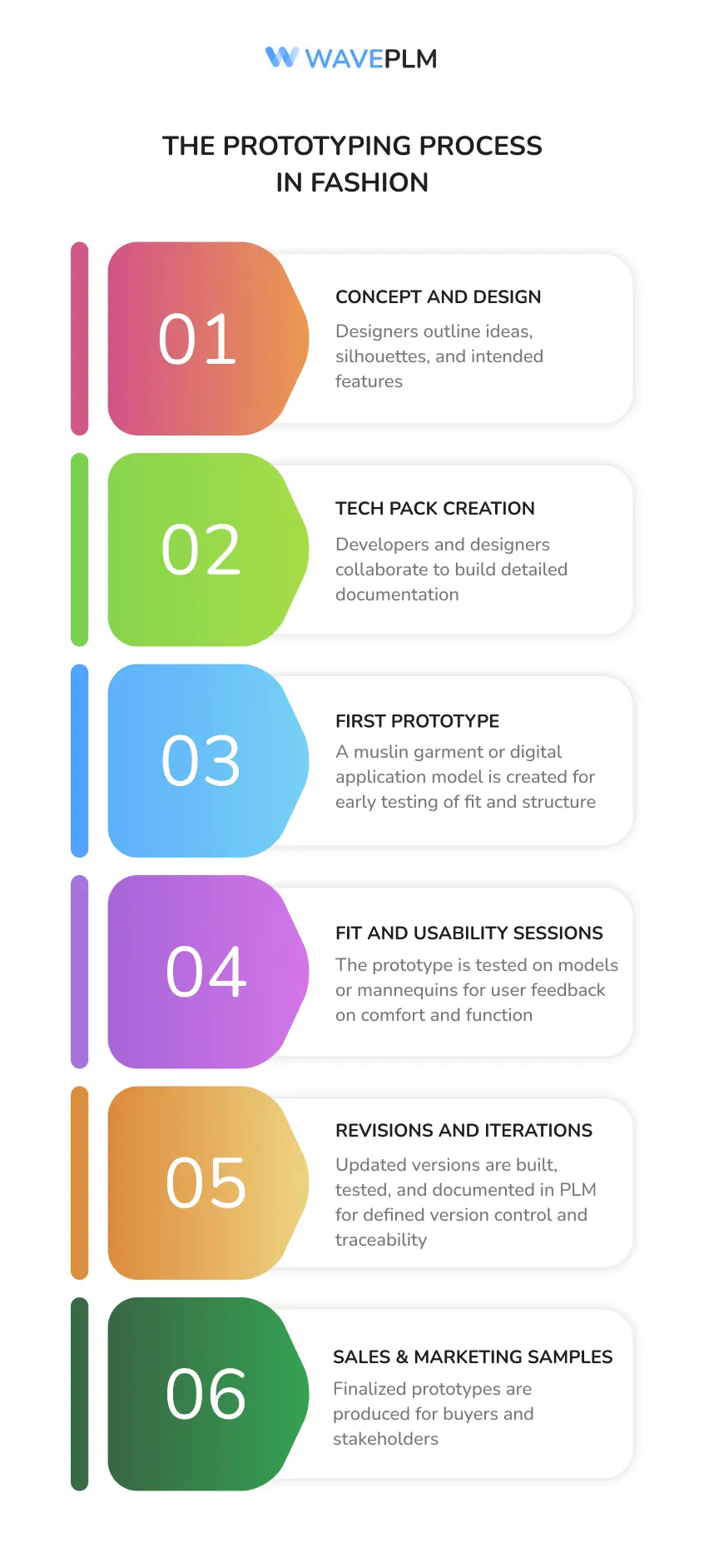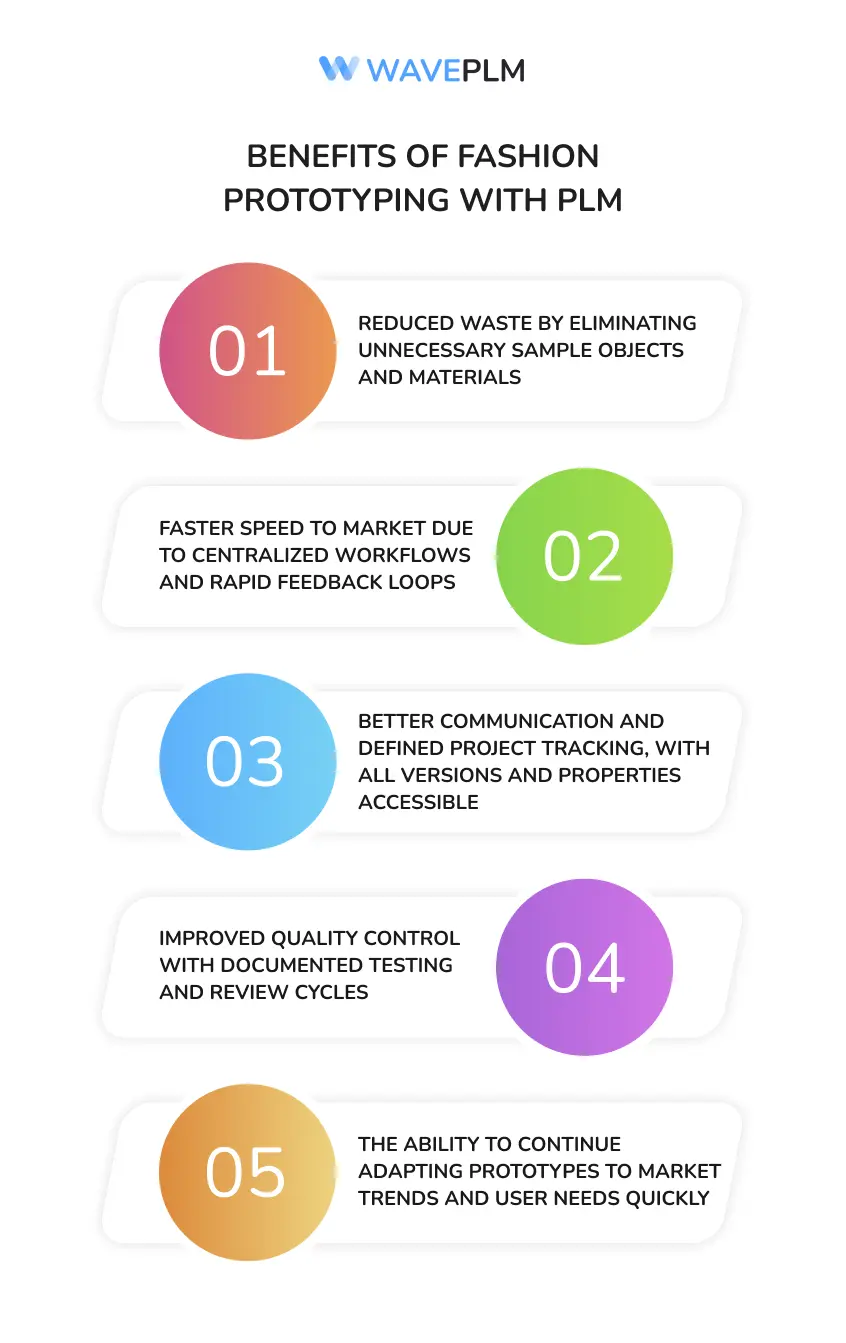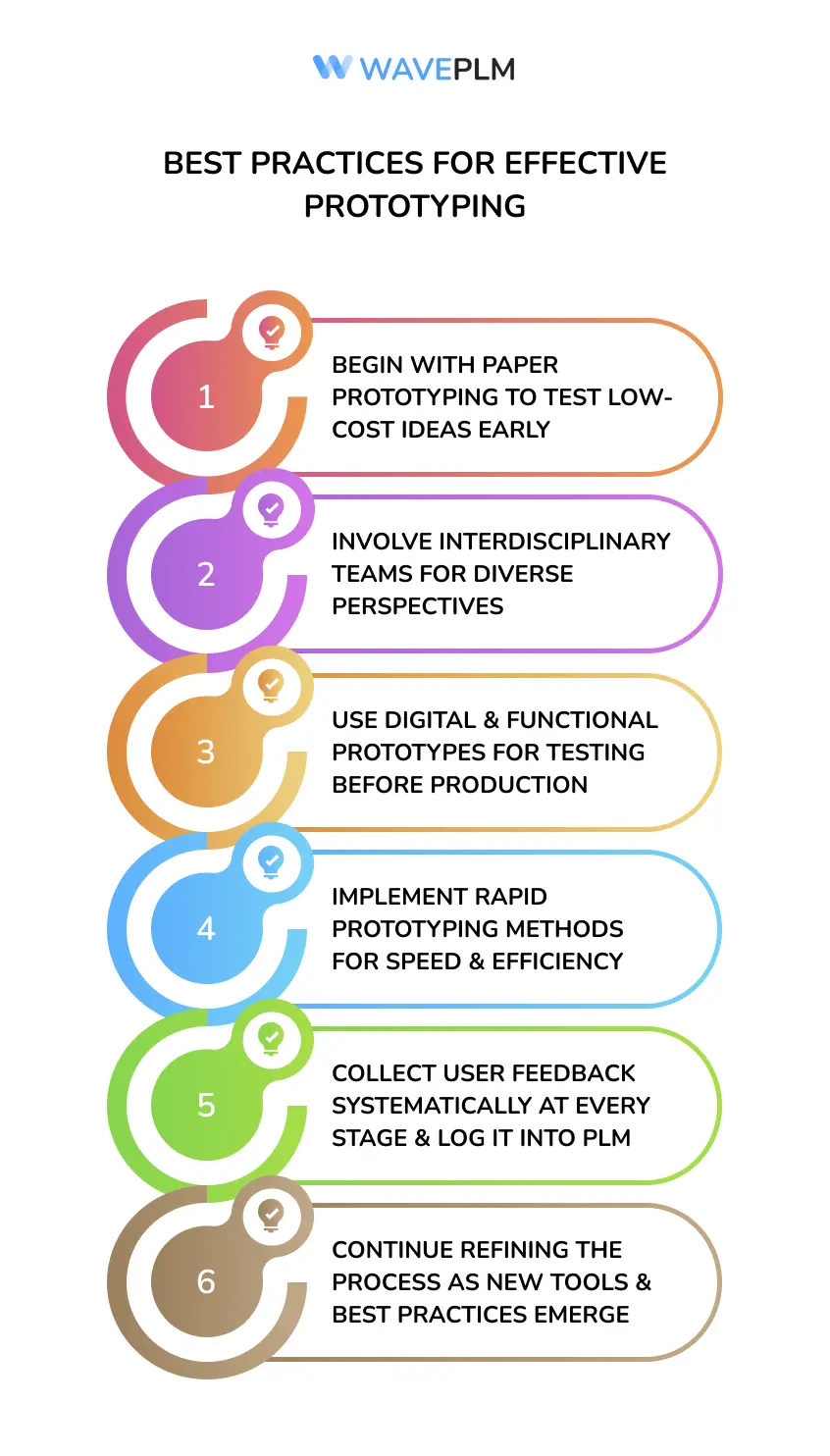
Introduction
In fashion design, a concept rarely moves directly from an initial sketch to the final product without multiple iterations and refinements. Prototypes, which can take many forms, are essential objects that act as tangible checkpoints for designers, developers — who are responsible for transforming concepts into functional prototypes and verifying designs—and other team members. They allow organisations to explore ideas more deeply, test multiple functions and intended features, and refine properties before committing significant resources.
Prototypes are a means to test and validate concepts before full-scale production. Prototyping is a widely accepted standard practice in modern development cycles, helping organizations achieve high-quality outcomes while aligning closely with user needs and market trends.
A prototype is not only about visualizing a design; it is also about understanding user feedback, collecting data on how materials behave, and evaluating usability aspects like closures, seams, and overall comfort. Prototypes help describe the intended outcome or design intent, making it easier to communicate ideas clearly among stakeholders. This process gives meaning to the design beyond aesthetics and ensures the product aligns with the intended archetype and brand standard.
Why Prototypes Matter
A prototype functions as a dress rehearsal for the final product and allows teams to analyze multiple defined outcomes. For apparel brands, it is where the idea meets reality, revealing how fabrics drape on different bodies, how seams align across sizes, and how the garment functions when worn.
Without prototypes, companies face the risk of production errors, like fabrics failing in stress tests or closures breaking during use—mistakes that can be expensive to fix once in full production. Through structured testing and careful feedback, teams can avoid unnecessary risk, improve the outcome, and continue developing better versions over time. Early testing saves organizations money and materials while creating products that truly serve the end-user.
Fashion Prototypes vs. Other Industries
In technology and product design, prototypes often appear as device wireframes or digital simulations. In fashion, prototypes differ but serve the same core purpose: validating design and functionality. Fashion prototypes are commonly called:
- Paper prototyping: Early sketches, mood boards, and spec sheets used to share ideas and gather input quickly. This prototyping method supports creativity and collaboration at low cost.
- Digital prototypes: High- and low-fidelity 3D garment models created with software like CLO3D or Browzwear, which enable 3D garment modeling and simulation. Digital prototypes allow designers to test each feature, such as fit, drape, and movement, individually in a virtual environment. Designers can also set properties or attributes—like fabric type or color—directly within the digital prototype, helping communicate design intent clearly with developers and factories.
- Functional prototype: A physical version of the product, often referred to as the first prototype sample, allowing designers to test construction, material properties, user interface elements like closures, and other critical functions.
Most projects continue through all three stages. A typical path involves concept sketches evolving into digital models and later multiple physical prototype versions until the design reaches its final state.
Types of Prototypes in Fashion
Fashion designers rely on a variety of prototype types to bring their ideas to life and ensure their concepts are ready for production. One common type is the functional prototype, which is a wearable version of the garment that allows for hands-on testing of usability, fit, and comfort. This type of prototype is essential for evaluating how the design performs in real-world scenarios and for making adjustments based on user feedback.
Another important prototyping method is paper prototyping, where designers use sketches, cutouts, or simple materials to quickly visualize the user interface and overall look of a garment. This low-fidelity approach is ideal for testing initial ideas and concepts without significant investment, making it easier to iterate and refine the design early in the process.
Rapid prototypes are also widely used, especially when speed is a priority. These are created using technologies like 3D printing to quickly produce a tangible example of a design. Rapid prototyping enables designers to test and compare different features or materials, helping them identify the best solution before moving forward.
The first prototype, often called a sample or muslin, serves as an early example of the final product. It is used to test the design’s fit, construction, and user experience, providing valuable insights into user needs and guiding further development. By leveraging different types of prototypes, fashion designers can efficiently test, refine, and perfect their creations before full-scale production.
The Role of PLM in Prototyping
Product Lifecycle Management (PLM) software has become a cornerstone tool for modern fashion organizations. It centralizes and defines every aspect of prototype management:
- Stores design properties, tech packs, and material details on a shared platform.
- Tracks every version of a prototype with comments, feedback, and approvals in a structured way.
- Provides speed and agility with rapid prototyping integrations and application connections.
- Supports engineers and developers by integrating with 3D tools, javascript-based mockups, and other digital design software. PLM also allows teams to run simulations or tests on digital prototypes to evaluate functionality and performance.
- Ensures all stakeholders have access to the latest version and properties, reducing errors and improving communication.
Note: When managing prototypes in PLM, always ensure that all changes are documented and tested before moving to the next development stage to maintain data integrity and streamline collaboration.
By using PLM, teams implement clear workflows that reduce typical errors, improve testing, and enhance collaboration across departments and organizations. This helps achieve better standards and ensures the product aligns with the intended user need.

The Prototyping Process in Fashion
Fashion prototyping follows a defined process that can differ slightly across organizations, but generally includes:
- Concept and design: Designers outline ideas, silhouettes, and intended features. The archetype of the collection and target user are defined, and prototypes can be focused on a particular subject or category within the collection.
- Tech pack creation: Developers and designers collaborate to build detailed documentation including measurements, trims, fabrics, and material properties.
- First prototype: A muslin garment or digital application model is created for early testing of fit and structure.
- Fit and usability sessions: The prototype is tested on models or mannequins, allowing for user feedback on comfort and function.
- Revisions and iterations: Updated versions are built, tested, and documented in PLM, ensuring defined version control and traceability. Each iteration may involve adding new features or changes to the prototype to enhance its functionality or design.
- Sales and marketing samples: Finalized prototypes are produced for buyers and stakeholders before the production date of the final product.
This iterative prototyping method allows teams to build, test, adjust, and continue improving with each cycle until the intended outcome is achieved. Throughout the process, specific terms are used to classify and document prototypes for clarity and consistency.

Prototyping Tools and Technologies
Modern fashion prototyping is powered by a range of advanced tools and technologies that streamline the design and testing process. Computer-aided design (CAD) software is a foundational tool, enabling designers to create detailed digital prototypes of garments. These digital models can be easily modified, shared, and used to visualize how a design will look and function before any physical materials are used.
3D printing is another transformative technology, allowing designers to create a functional prototype of a garment or accessory with remarkable speed and precision. This method is especially useful for testing the fit, structure, and features of a design, reducing the need for multiple physical samples.
Laser cutting tools further enhance the prototyping process by enabling precise cutting of fabrics and materials, which is essential for creating accurate prototypes that reflect the intended design. For digital experiences, tools like JavaScript and HTML are used to build interactive prototypes of fashion websites or applications. These functional prototypes allow developers and designers to test the user interface and user experience, ensuring the final application meets user expectations.
By integrating these tools and technologies, fashion teams can create, test, and refine prototypes more efficiently, ultimately delivering better-designed products and digital experiences.
Rapid Prototyping in Fashion
Rapid prototyping has become a game-changer in the fashion industry, enabling designers to quickly turn ideas into tangible prototypes. This method leverages technologies such as 3D printing and laser cutting to accelerate the creation of prototypes, allowing for faster testing and iteration. With rapid prototyping, designers can create multiple versions of a design in a short period, testing different features, materials, and construction methods to find the optimal solution.
For example, a designer might use 3D printing to create a rapid prototype of a shoe, testing its fit, comfort, and durability before committing to full-scale production. This approach not only speeds up the development process but also reduces the risk of costly errors by identifying potential issues early. Rapid prototyping supports a more agile workflow, enabling teams to respond quickly to market trends and user feedback.
By adopting rapid prototyping methods, fashion organizations can reduce development time and costs, improve the quality of the final product, and foster a culture of innovation and continuous improvement.
Benefits of Fashion Prototyping with PLM
The benefits of using PLM with prototypes are extensive:
- Reduced waste by eliminating unnecessary sample objects and materials.
- Faster speed to market due to centralized workflows and rapid feedback loops.
- Better communication and defined project tracking, with all versions and properties accessible.
- Improved quality control with documented testing and review cycles.
- The ability to continue adapting prototypes to market trends and user needs quickly.

Challenges & Solutions
Without a defined prototyping method and PLM structure, teams risk miscommunication, outdated specifications, and lost data. Disorganized workflows often cause missed deadlines and increased costs. PLM addresses these challenges by offering clear version control, consistent properties tracking, and detailed feedback logs. It reduces risk, enforces consistent standards, and allows designers, developers, and engineers to serve user needs effectively.
Best Practices for Effective Prototyping
To achieve the best outcomes, organizations should:
- Begin with paper prototyping to test low-cost ideas early. However, it can make sense to skip certain steps or methods depending on the project’s needs and the team’s expertise.
- Involve interdisciplinary teams including developers and engineers for diverse perspectives.
- Use digital and functional prototypes to test features and functions before large-scale production.
- Implement rapid prototyping methods for speed and efficiency.
- Collect user feedback systematically at every stage and log it into PLM software.
- Continue refining the process as new tools and best practices emerge.

Real-World Examples
Leading organizations show the impact of effective prototyping. Nike uses advanced digital prototypes and javascript-based simulations to validate sneaker properties before production, ensuring each prototype is true to the intended design and final product. Their prototyping process supports invention and innovation by enabling the creation and testing of original concepts before they reach the market. Zara applies agile development methods, combining digital models with functional prototypes to respond to market trends in a matter of weeks.
Another example is smaller organizations using PLM to serve niche markets by implementing best practices and leveraging rapid prototyping to reduce cost and achieve better outcomes. By adopting these tools, they can reach new levels of prototyping, allowing them to innovate and bring their inventions to market more efficiently.
Expanding PLM’s Role and Future Trends
As fashion continues to evolve, PLM will play an even greater role in managing prototypes. Upcoming trends include:
- Integration of AI-driven feedback loops for automated design improvement.
- Advanced 3D visualization and virtual fit testing.
- Automated code connections between design and production software for seamless application development.
- Use of sustainability metrics tied directly to prototype properties, helping organizations meet environmental standards.
These innovations allow teams to continue achieving high-quality outcomes while maintaining speed and lowering risk.
The word ‘prototype’ is also evolving in the context of fashion and technology. It now refers not only to initial physical models but also to digital representations and benchmarks that set new standards for design and production processes.
Human-Computer Interaction in Fashion Prototyping
Human-computer interaction (HCI) is increasingly important in fashion prototyping, especially as digital experiences become integral to the industry. By applying HCI principles, designers can create prototypes that prioritize the user interface and overall user experience, whether for a physical product or a digital application.
For instance, designers might develop a prototype of a fashion website or mobile application that allows users to interact with virtual models, customize garments, or explore collections. Through usability testing and user feedback, designers can identify areas for improvement, ensuring the final product is intuitive and engaging. HCI methods help designers understand user needs and behaviors, making it possible to create prototypes that are both functional and visually appealing.
Incorporating related topics such as user-centered design and usability testing into the prototyping process ensures that the end result meets the expectations of the target audience. By focusing on the user interface and experience from the earliest stages of design, fashion teams can achieve their goal of making products and applications that truly resonate with users and stand out in a competitive market.
Conclusion
Prototyping is far more than creating a sample; it is an essential strategy for building smarter, faster, and more sustainable fashion design. By adopting PLM software and following best practices, organizations reduce risk, meet consistent standards, and serve user needs effectively. The iterative prototyping method brings clarity, improves outcomes, and allows teams to continue improving with each version.





Leave a Reply